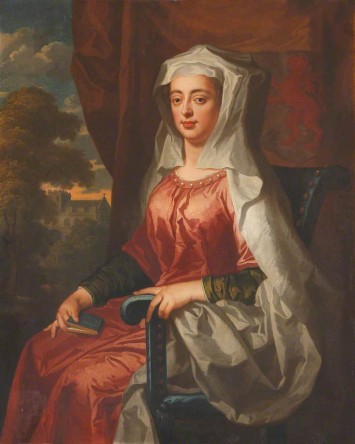
Dervorguilla of Galloway
c. 1210 – January 28, 1290
Patron and Founder of Balliol College
Dervorguilla of Galloway (c. 1210 – January 28, 1290) was a 'lady of substance' in 13th century Scotland, the wife from 1223 of John, 5th Baron de Balliol, and mother of John I, a future king of Scotland.
Dervorguilla was one of the three daughters and heiresses of the Gaelic prince Alan, Lord of Galloway. She was born to Alan's second wife Margaret of Huntingdon.
Dervorguilla's father died in 1234 without a legitimate son (he had an illegitimate son Thomas). According to both Anglo-Norman feudal laws and to ancient Gaelic customs, Dervorguilla was one of his heiresses. This might be considered an unusual practice in England, but it was more common in Scotland and in Western feudal tradition. Because of this, Dervorguilla bequeathed lands in Galloway to her descendants, the Balioland the Comyns.
The Balliol family into which Devorguilla married was based at Barnard Castle in County Durham, England.
In 1263, her husband Sir John was required to make penance after a land dispute with Walter Kirkham, Bishop of Durham. Part of this took the very expensive form of founding a College for the poor at the University of Oxford. Sir John's own finances were less substantial than those of his wife, however, and long after his death it fell to Devorguilla to confirm the foundation, with the blessing of the same Bishop as well as the University hierarchy. She established a permanent endowment for the College in 1282, as well as its first formal Statutes. The college still retains the name Balliol College.
Devorguilla founded a Cistercian Abbey 7 miles south of Dumfries in South West Scotland, in April 1273. It still stands as a picturesque ruin of red sandstone.
When Sir John died in 1269, his widow, Dervorguilla, had his heart embalmed and kept in a casket of ivory bound with silver. The casket travelled with her for the rest of her life. In 1274–5 John de Folkesworth arraigned an assize of novel disseisin against Devorguilla and others touching a tenement in Stibbington, Northamptonshire. In 1275–6 Robert de Ferrers arraigned an assize of mort d'ancestor against her touching a messuage in Repton, Derbyshire. In 1280 Sir John de Balliol's executors, including his widow, Devorguilla, sued Alan Fitz Count regarding a debt of £100 claimed by the executors from Alan. In 1280 she was granted letters of attorney to Thomas de Hunsingore and another in England, she staying in Galloway.
In her last years, the main line of the royal House of Scotland was threatened by a lack of male heirs, and Devorguilla, who died just before the young heiress Margaret, the Maid of Norway, might, if she had outlived her, have been one of the claimants to her throne. Devorguilla was buried beside her husband at New Abbey, which was christened 'Sweetheart Abbey', the name which it retains to this day. The depredations suffered by the Abbey in subsequent periods have caused both graves to be lost.
To make your own nomination download the nomination form here